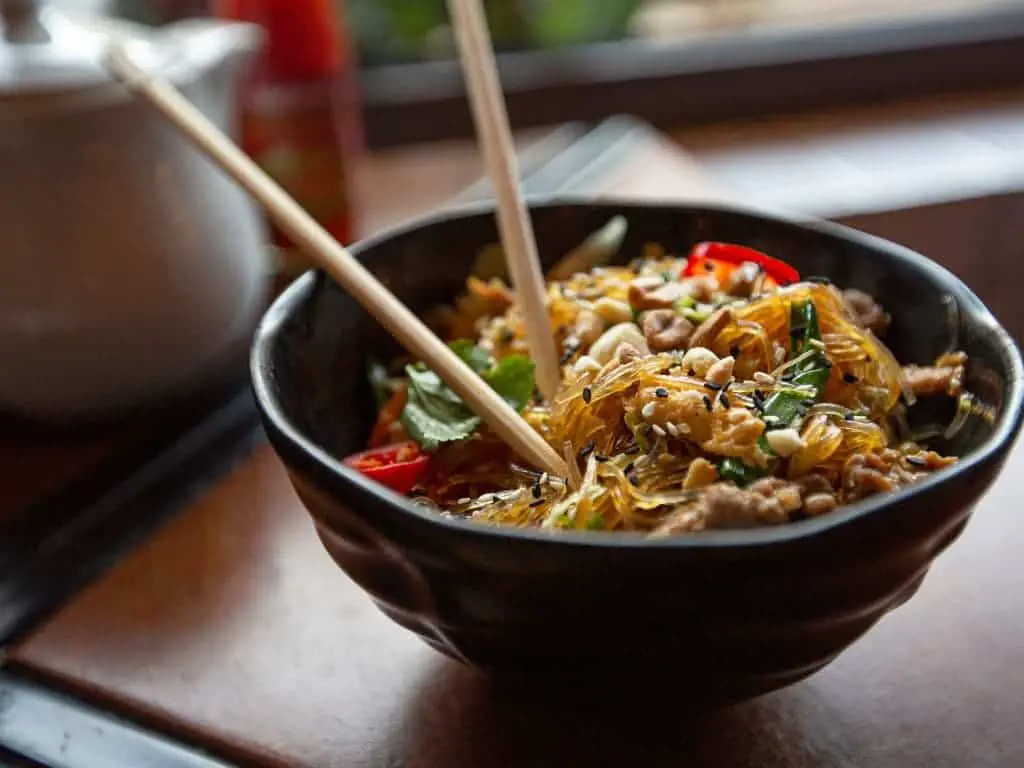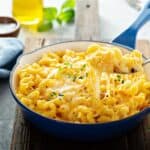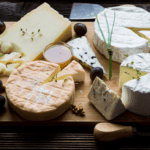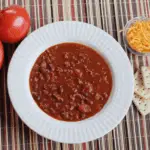Noodles and pasta are two of the world’s most popular and ubiquitous foods, spanning cuisines across the globe. But are noodles and pasta really the same thing?
The main difference between noodles and pasta is that noodles are a staple in Asian cuisines and are often made with rice flour or other types of grain flour, while pasta is a staple in Italian cuisine, typically made from durum wheat flour. Both are types of unleavened dough, but they are not the same thing.
While there are some similarities between the two, there are also important distinctions when it comes to ingredients, preparation methods, cooking techniques, cultural traditions, and nutritional values.

What are the Main Differences Between Noodles and Pasta?
At a basic level, noodles and pasta can both be described as unleavened dough that has been rolled flat and cut into long strips or other shapes. However, there are some clear differences that separate noodles from pasta.
How do Ingredients Differ Between Noodles and Pasta?
The main ingredients used to make noodles and pasta can vary significantly. Pasta is typically made from a simple combination of durum wheat semolina flour and water, sometimes enriched with eggs. Durum wheat contains high levels of gluten which gives pasta its characteristic chewy texture.
In contrast, noodles can be made from a wider variety of ingredient combinations. While some noodles like egg noodles and udon also contain wheat flour, many others use rice flour, buckwheat flour, or starches like potato or tapioca. Rice noodles, soba noodles, and cellophane noodles rely on rice, buckwheat, and starch as their base ingredients. The diverse ingredients used to produce noodles results in a wide variety of textures.
How do Preparation and Cooking Methods Vary for Noodles and Pasta?
The preparation process also differs between noodles and pasta. Pasta dough is typically mixed, kneaded, and then extruded through a die cutter to create various shapes like spaghetti, penne, or macaroni. In contrast, noodles can be rolled and cut into strips or shapes, or extruded into boiling water.
Cooking techniques for noodles and pasta also vary. Pasta is generally cooked by dropping it into a pot of boiling salted water. Optimal cooking times are based on the shape and thickness of the pasta. Noodles can also be boiled, but are often pan fried or simmered depending on the type of noodle. Ramen noodles, for instance, are boiled briefly to cook and then added to broth. Udon noodles work well simmered in broth or sauce.
What are the Different Types of Noodles and Pasta?
There is a vast range of different types of noodles and pasta around the world. Here are some of the main categories and popular varieties.
What are the Characteristics of Asian Noodles?
Asian noodles encompass a huge amount of regional diversity. Popular types like ramen, udon, soba, rice noodles, and egg noodles can have different ingredients, textures, and uses. Ramen features thin, curly wheat noodles served in broth. Udon uses thicker, chewier wheat noodles often paired with savory broth or sauce. Soba contains thin buckwheat noodles with a nutty, resilient texture. Rice noodles and cellophane noodles make use of rice or starch for softer, smoother noodles. Egg noodles have a rich egg taste and yellow color.
What are the Features of Italian Pasta?
Italian pasta is made almost exclusively from durum wheat semolina flour and water or eggs. The varieties are defined by their shape, size, and texture when cooked. Long shapes like spaghetti and linguine are thin and flexible. Short pastas like penne, rotini, and farfalle (bow ties) work well in sauces and salads. Tiny pastas like orzo are perfect for soups or as rice substitutes. Broad, flat pastas like lasagne and fettuccine have substantial texture and body. Stuffed or shaped pastas like ravioli and tortellini encapsulate delicious fillings.
How do Soup Noodles, Stir-fry Noodles, and Salad Noodles Differ?
Beyond geographic differences, noodles can also be categorized by their usage in various dishes. Soup noodles are thin and delicate like ramen or rice noodles which soak up broth flavors when briefly cooked. Heartier udon and soba also work well in soups. Stir-fry noodles need to be able to absorb sauces and stand up to high-heat cooking, like thick rice sticks, crispy chow mein, and pan-fried udon. For salads, noodles should have some firmness without getting mushy. Popular choices are pasta shapes like rotini or farfalle, buckwheat soba, chewy wheat noodles, and chill-resistant rice noodles.
How are Noodles and Pasta Made?
Both noodles and pasta begin as simple dough made from flour and water. Additional ingredients and manufacturing techniques differentiate the two.
What is the Role of Durum Wheat, Semolina Flour, and Wheat Flour in Pasta Making?
Durum wheat is the hardest wheat variety containing high protein and gluten levels, perfect for pasta making. Semolina flour is made from grinding only the endosperm of durum wheat which produces an ideal coarse, granular texture. Mixing just semolina flour and water creates pasta with the classic firm, springy bite. Optionally, eggs can be added for flavor, richness, and color. The pasta dough is extruded through dies to form shapes which seal in the uncompressed dough.
How are Egg Noodles, Rice Noodles, and Soba Noodles Produced?
Egg noodles begin with a dough of wheat flour, eggs, and salt kneaded to a pliable consistency. The dough is rolled flat then cut into strands. Rice noodlesuse a batter made from rice flour and water which is steamed in flat sheets, then cut. For soba noodles, buckwheat flour and wheat flour are combined into an elastic dough, rolled out, and sliced. The noodles may be air-dried or boiled briefly after cutting to stop the cooking process.
How Should Noodles and Pasta be Cooked?
Proper cooking is essential to achieve the ideal tender yet toothsome texture of noodles and pasta. Preparation techniques vary widely based on noodle ingredients, width, and intended use in dishes.
What are the Best Cooking Methods for Gluten-free, Vegetarian, and Vegan Noodles?
Gluten-free noodles made from rice, quinoa, or tapioca need to be cooked gently to avoid becoming mushy. Most are best with stir-frying, simmering, or soaking in broth. Vegetarian egg noodles can be boiled or pan-fried like traditional egg noodles. Vegan noodles also work well pan-fried or stir-fried to develop flavor. Care should be taken not to overcook plant-based noodles as they can quickly become soggy.
How do Cooking Techniques Vary for Udon and Ramen Noodles?
Udon noodles require a cooking time of 5-7 minutes to achieve the right tender yet slightly chewy consistency. They can be boiled then used in soups or stir-fries, or simmered in sauces and broths. Ramen noodles only need 1-2 minutes in boiling water to cook through. They are then drained and added to flavorful broth. Ramen noodles should never be overcooked or they will become mushy.
What are Some Popular Dishes that Use Noodles or Pasta?
From Asian soups to Italian pasta entrees, noodles and pasta are used in countless beloved recipes across cultures worldwide.
What are the Cultural Differences Between Noodles and Pasta Dishes?
Italian pasta appears in recipes like pasta bolognese, cacio e pepe, shrimp scampi, lasagna, chicken alfredo, and more. Pasta is typically the star of the dish, sauced or baked into comforting, carb-rich meals. Asian noodles are often one component of a balanced meal with vegetables, meat or seafood, soup, and condiments. Noodles appear in dishes like pad thai, ramen, pho, chow mein, lo mein, drunken noodles, and hundreds more.
How have Noodles and Pasta Evolved Over Time in Different Cuisines?
Each culture has developed noodle and pasta traditions based on available local ingredients. Italian pasta evolved from ancient wheat and milled flour paired with Mediterranean ingredients like olive oil, tomatoes, and seafood. Chinese noodles developed from wheat, millet, rice, and eventually egg noodles and refined dough techniques. Japanese noodles like ramen and udon were first made from wheat but evolved to use seaweed, fish broth, and regional flavors. Thai rice noodles were shaped by abundant rice crops and Thai curry spices, herbs, and oils.
What are the Nutritional Benefits of Noodles and Pasta?
When enjoyed in moderation as part of a balanced diet, noodles and pasta offer useful nutrition. But they also come with some health considerations.
What are the Health Benefits and Risks of Eating Noodles and Pasta?
Noodles and pasta provide energy from carbohydrates, along with protein, vitamins, and minerals. Whole grain or high-protein versions offer more nutrition. Refined wheat pasta and white rice noodles are higher in calories and carbohydrates with less fiber. The abundant carbohydrates and calories lead to concerns about weight gain and diabetes. But studies suggest al dente cooked pasta has a lower glycemic index. Portion size, sauces, and cooking methods all factor into the healthfulness of noodles and pasta.
How do the Environmental Impacts of Producing Noodles and Pasta Compare?
Both durum wheat and rice, two common noodle ingredients, require significant water and land to farm. Transporting these commodities worldwide is carbon intensive. Rice cultivation generates methane emissions. But wheat also produces nitrous oxide and requires heavy fertilizer use. There are also sustainability issues around palm oil, a common ingredient in instant noodles. While production impacts are complex, moderating consumption of all grains and packaged foods benefits the environment.
What are Some Sustainable Alternatives to Noodles and Pasta?
Consumers looking for eco-friendly noodles and pasta have several options to lessen environmental impacts.
How can Consumers Choose Environmentally Friendly Noodle and Pasta Options?
Choosing organic, locally made noodles and pasta reduces transportation mileage and chemical usage. Opting for whole grain varieties over refined saves processing energy. Lower-impact ancient grains like quinoa, buckwheat, millet, and amaranth can replace some wheat and rice. Vegetable-based noodles made from spinach, beets, or carrots have a lighter footprint. Reusable containers or minimal packaging also help decrease waste. Buying in bulk further reduces packaging. With some research and creativity, more sustainable noodles and pasta choices are available in many markets worldwide.
In summary, while noodles and pasta share some common origins and uses in cuisine, they have important distinctions when it comes to ingredients, production methods, culinary roles, nutrition, and environmental impacts. There is a diverse range of noodle and pasta varieties to discover across cultures. And continuing innovation means more sustainable and healthier options are emerging. With some knowledge of how noodles and pasta differ, anyone can find versions that best suit their tastes, values, and lifestyle.
































